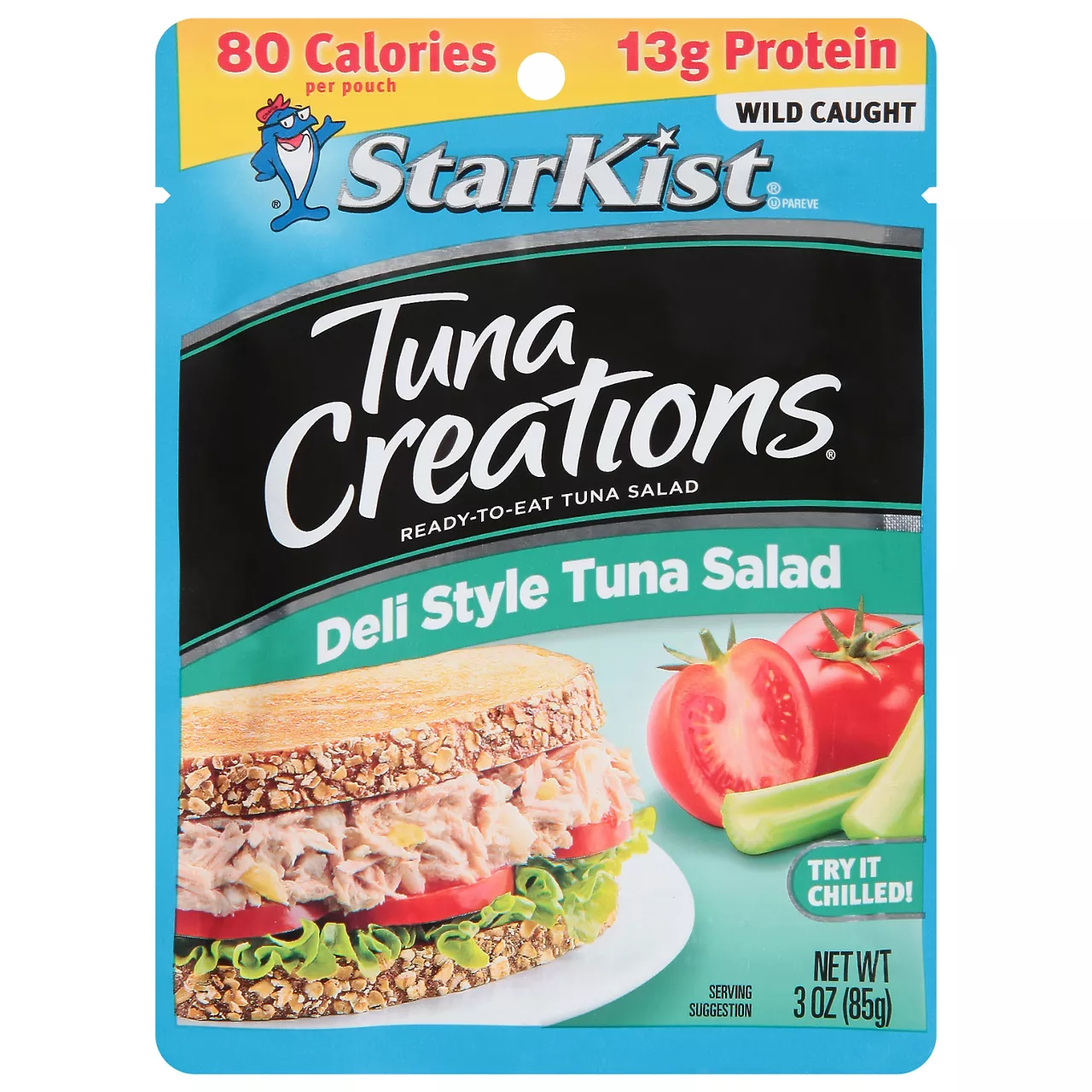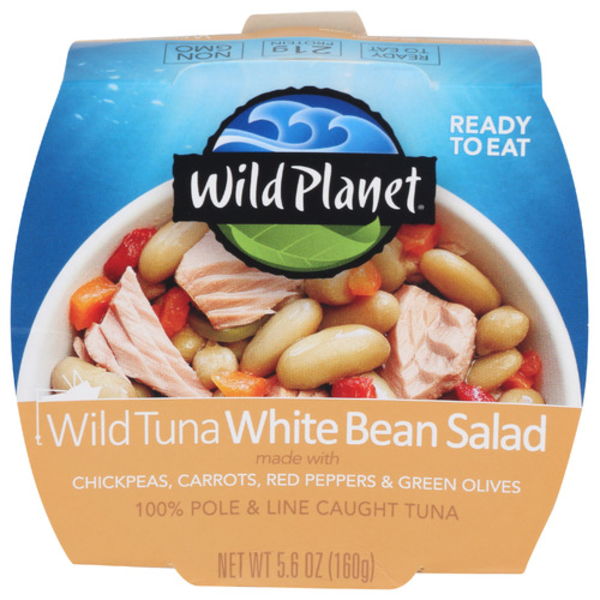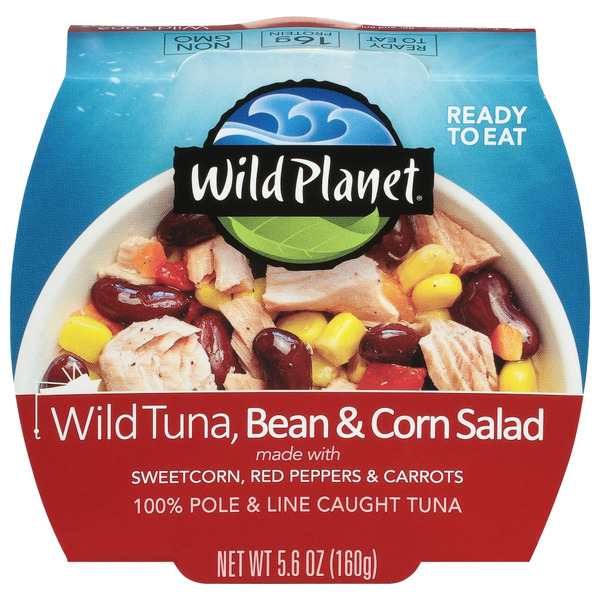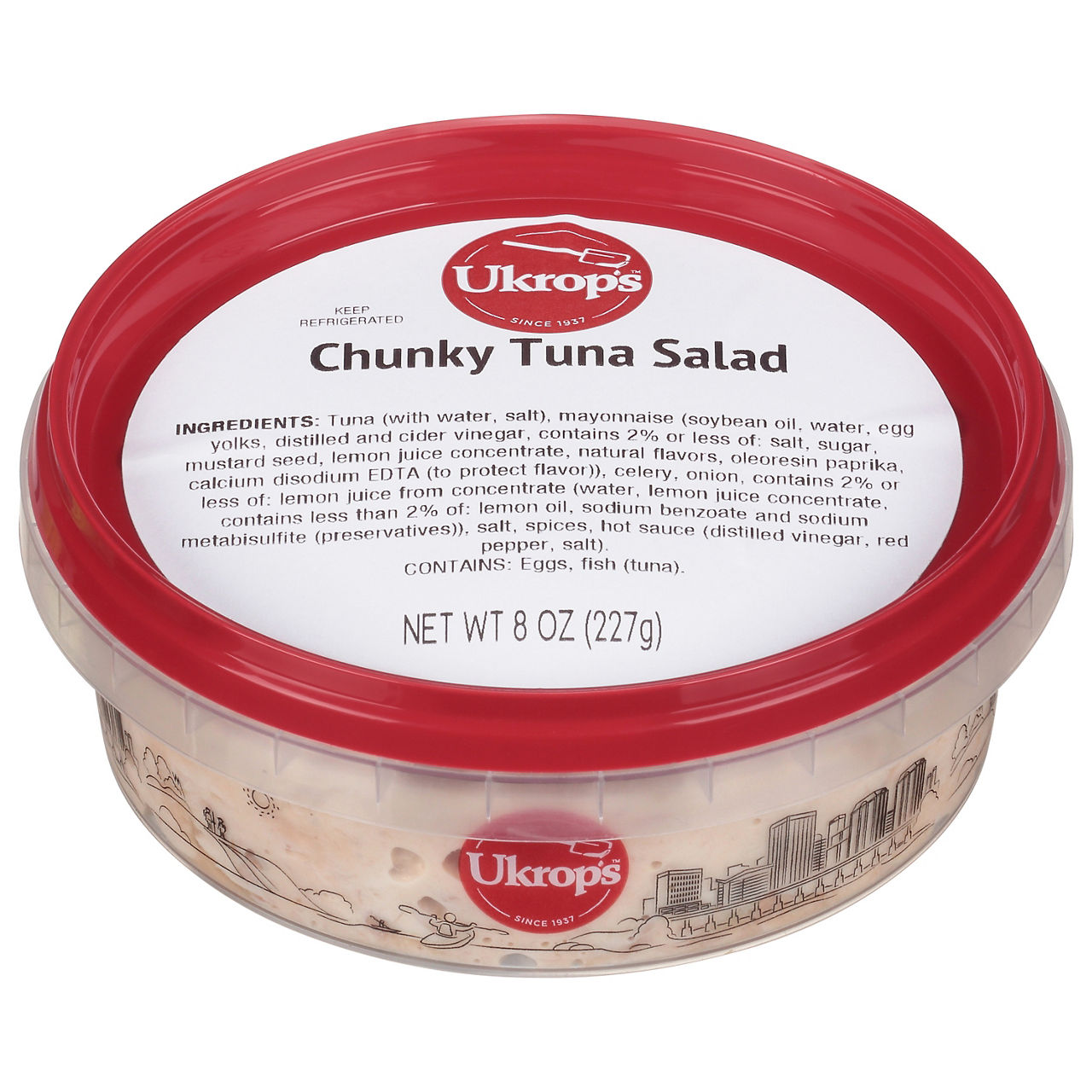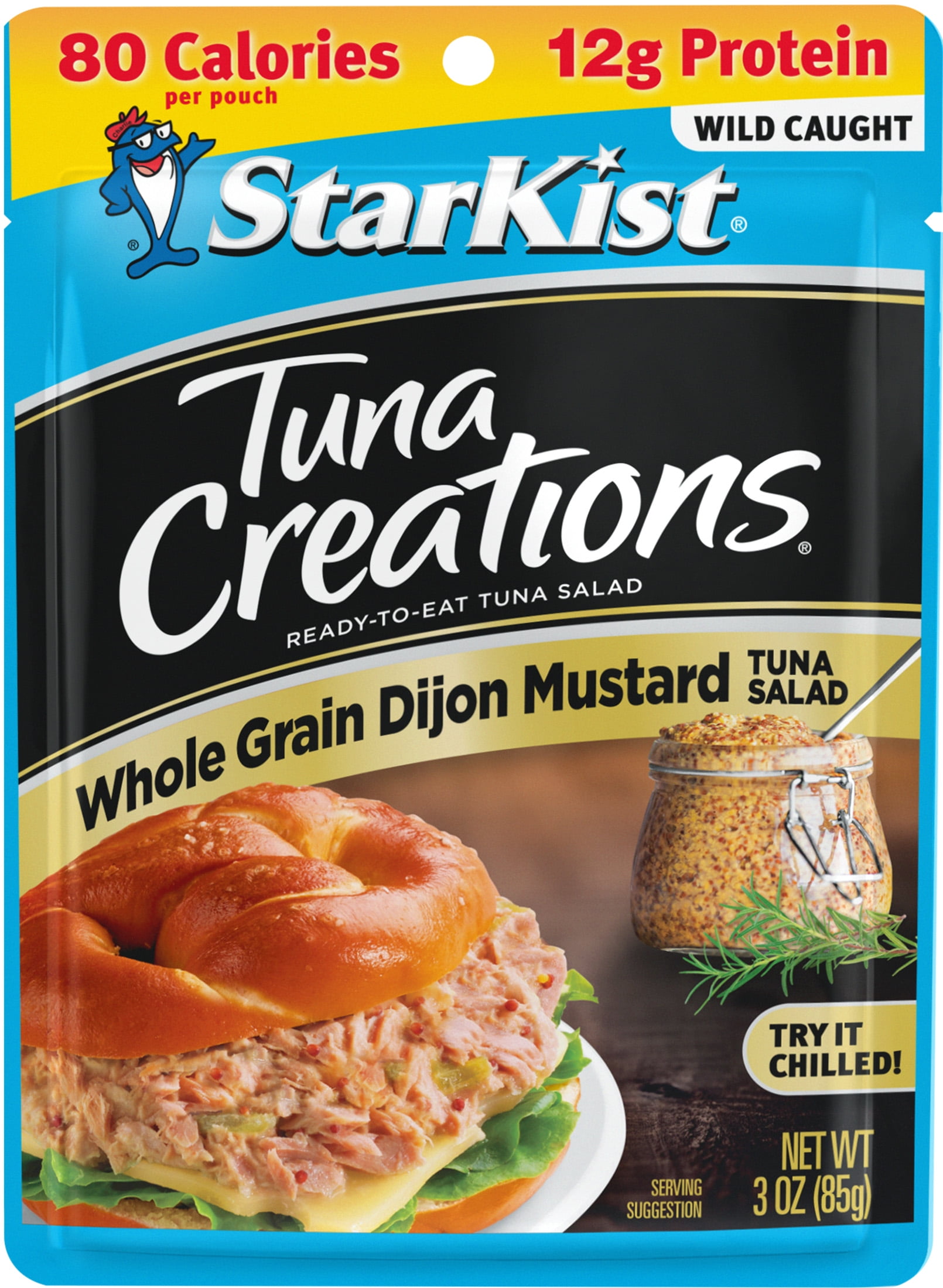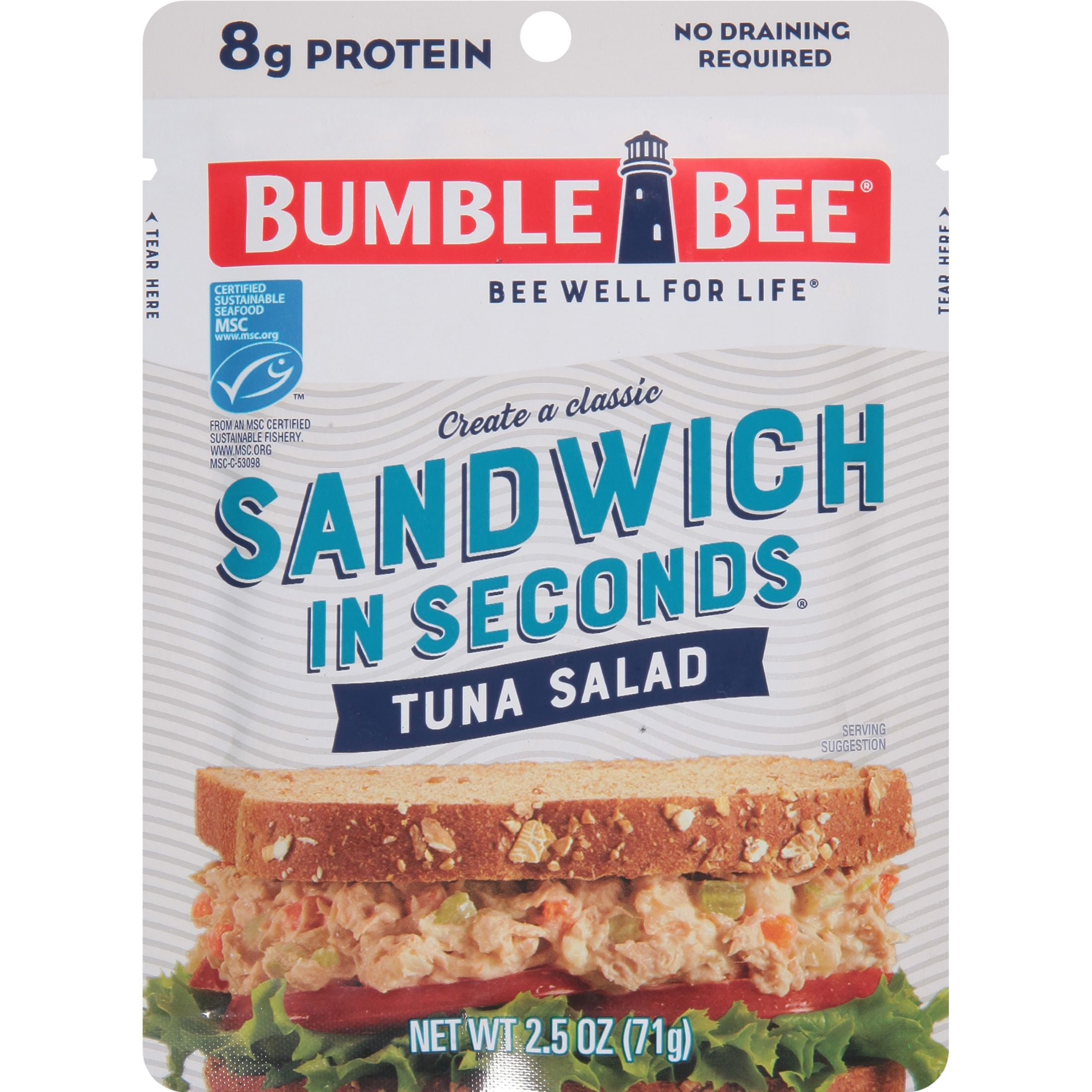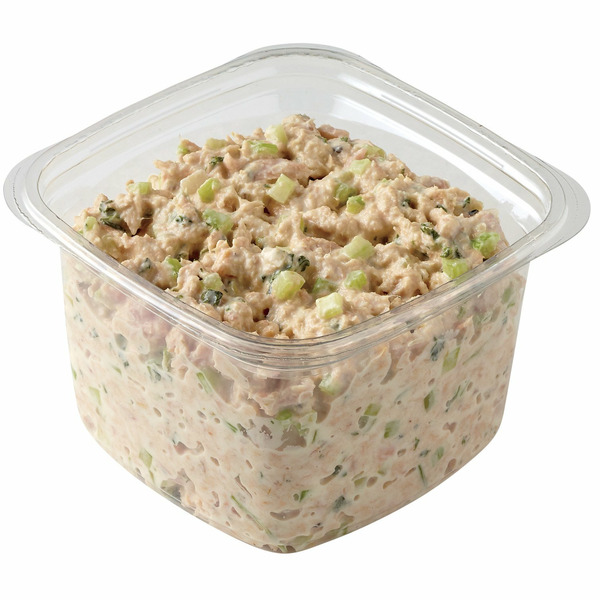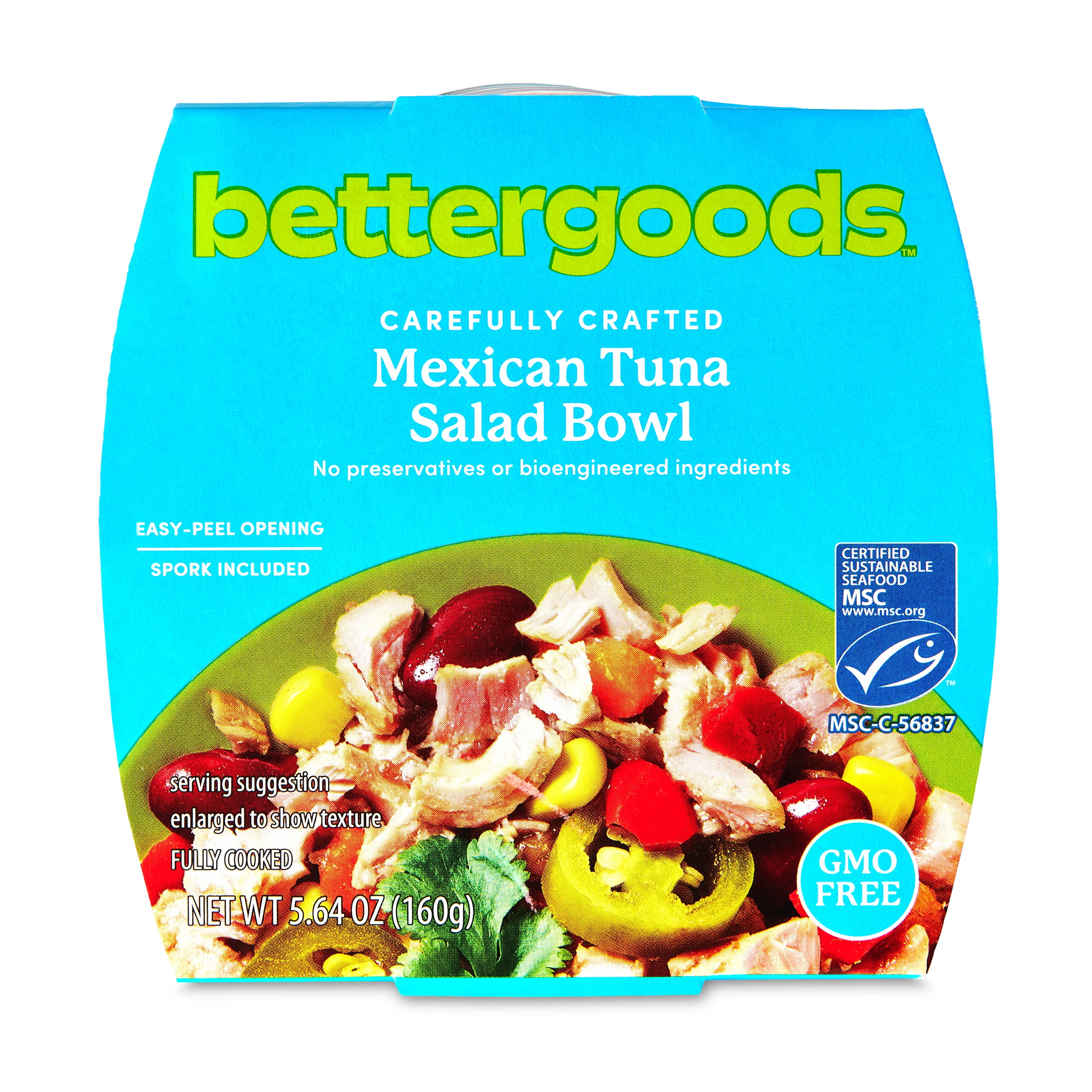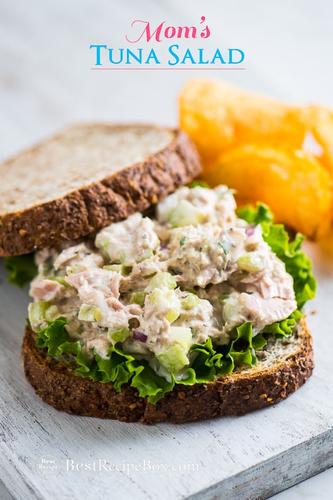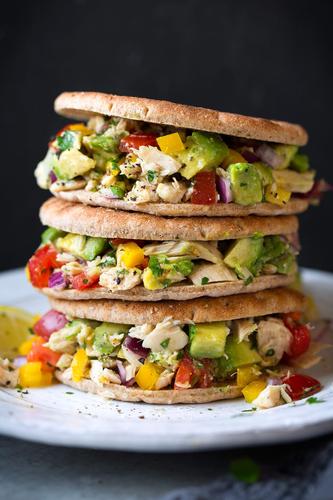LUNCH
Canned Tuna Salad
Tuna salad is a popular and versatile dish made primarily from canned tuna that is combined with various ingredients to create a flavorful and satisfying meal. The dish originated in Europe and gained widespread popularity in the United States in the 20th century. Tuna salad is enjoyed both as a stand-alone dish and as a filling for sandwiches, which are often referred to as "tuna salad sandwiches."
The base preparation of tuna salad involves mixing canned tuna (either in water or oil) with a binding agent, most commonly mayonnaise. Other ingredients such as diced onions, celery, pickles, and a variety of seasonings are often added to enhance the taste and provide texture. Tuna salad has inspired many variations and regional recipes, and can be easily customized to suit individual preferences.
27%
CARBS
27%
FAT
46%
PROTEIN
Featured Articles
545 Canned Tuna Salad Products
Wegmans Tuna Salad
Starkist Tuna Creations Tuna Salad, Deli Style
Wild Planet Wild Tuna White Bean Salad
Wild Planet Salad, Wild Tuna, Bean & Corn
Ukrop's Chunky Tuna Salad
StarKist Tuna Creations, Whole Grain Dijon Mustard Tuna Salad
Bumble Bee Sandwich in Seconds Tuna Salad Pouch, High Protein, Tuna Fish, 2.5 Ounce Pouch
Meal Simple by H-E-B Savory Tuna Salad
bettergoods Mediterranean Tuna Salad Bowl, MSC Certified
bettergoods Mexican Tuna Salad Bowl, MSC Certified
18 Recipes for Canned Tuna Salad
Canned Tuna Salad FAQ
How to store tuna salad?
How to make tuna salad without mayo?
How to prevent tuna salad from being watery?
What are some ingredients that can be added to tuna salad?
How to serve tuna salad?
Expiration & Storage Tips
When does Tuna Salad expire?
An unopened can of tuna would generally have a shelf life of up to 3-5 years from the manufacturing date. However, once it’s mixed to make a tuna salad, its shelf life significantly reduces due to the added ingredients. Refrigerated tuna salad, whether store-bought or homemade, typically lasts between 3 to 5 days. Try to enjoy it within this time for the best flavor and safety. As for the freezer, freezing isn’t typically recommended for tuna salad due to the adverse effects on its texture and quality. The mayo and other vegetables can become watery and mushy after thawing.
How do you tell if Tuna Salad is bad?
Spoiled tuna salad often has a strong, sour or rancid smell that is quite distinct. Discoloration is another sign – if your tuna salad is turning a darker color, it’s likely going bad. Also, if there’s any mold or any growth on the salad, don’t taste it – just toss it. The texture can change too, becoming too mushy or slimy. If you notice any of these signs, it’s safer to just dispose of the salad.
Tips for storing Tuna Salad to extend shelf life
• Always store your tuna salad in the refrigerator, not on the counter or in the pantry. This is especially crucial since tuna salad typically contains mayonnaise, which can spoil easily at room temperature.
• Use airtight containers for storing tuna salad. This not only prevents the salad from absorbing odors from other foods in the fridge but also helps keep it moist and prevents it from drying out.
• If you’ve made a large batch of tuna salad, consider storing it in smaller, individual portions. This can help extend its shelf life as you only open and use what you need, reducing the exposure of the entire batch to air, light, and changes in temperature.
• Don't leave tuna salad out for more than two hours at room temperature or more than one hour if it's hotter than 90°F outside. Bacteria growth happens quickly in such conditions, potentially making your salad unsafe to eat.
• Last but not least, always pay attention to the preparation date and remember that fresher is always better when it comes to foods like tuna salad, so try to consume it shortly after preparation.
EXPIRES WITHIN
5 - 14
DAYS
Substitutes
Health Info
Macros
19g
CARBS
18g
FAT
32g
PROTEIN
Allowed on these diets
MEDITERRANEAN
LACTOSE FREE
GLUTEN FREE
Contains these allergens
FISH



